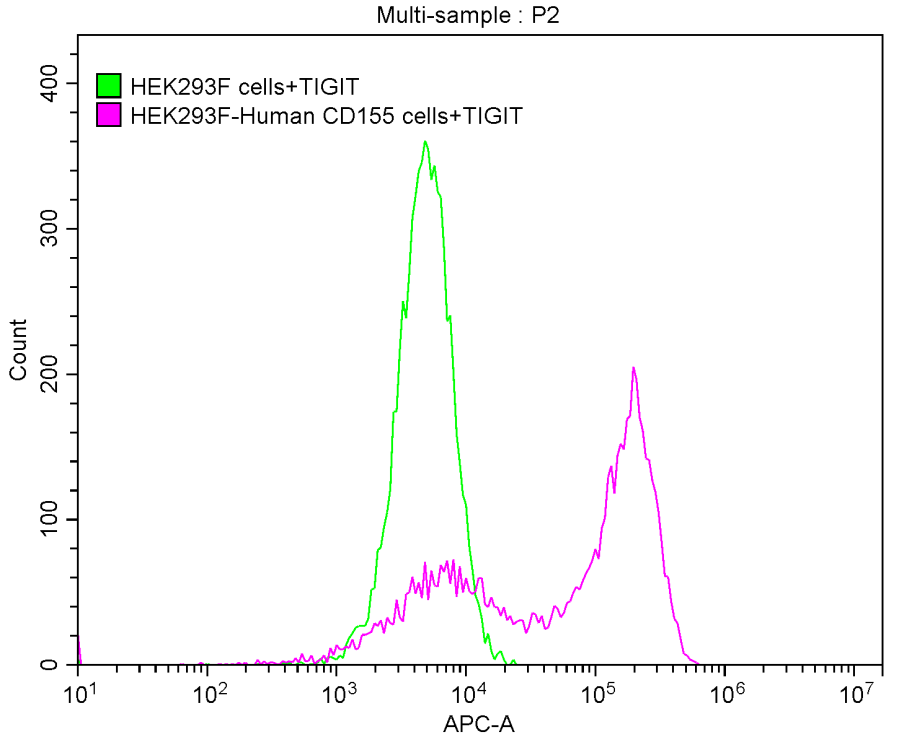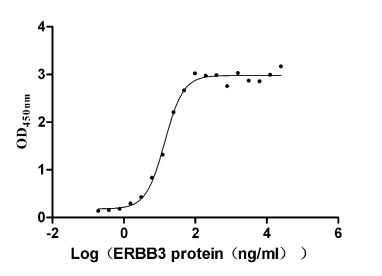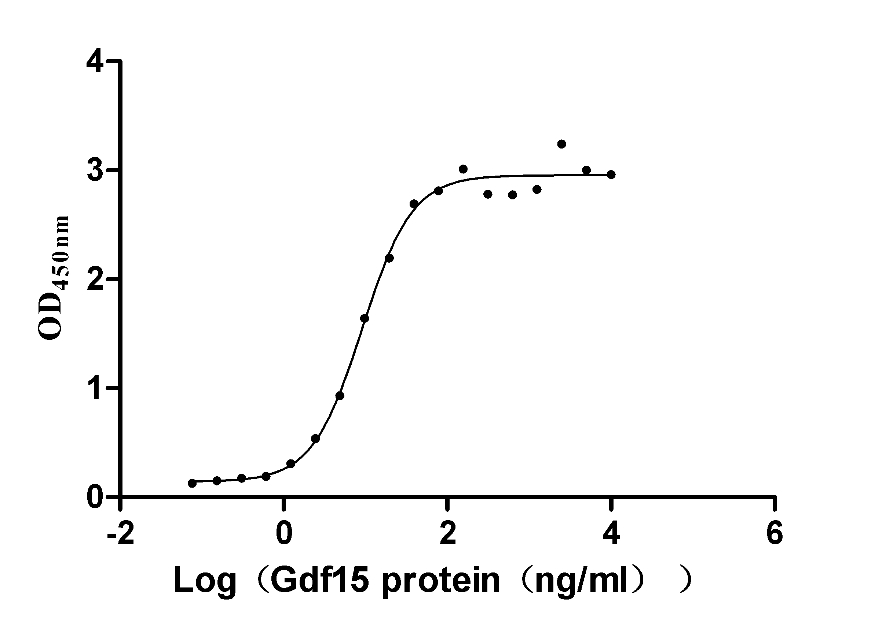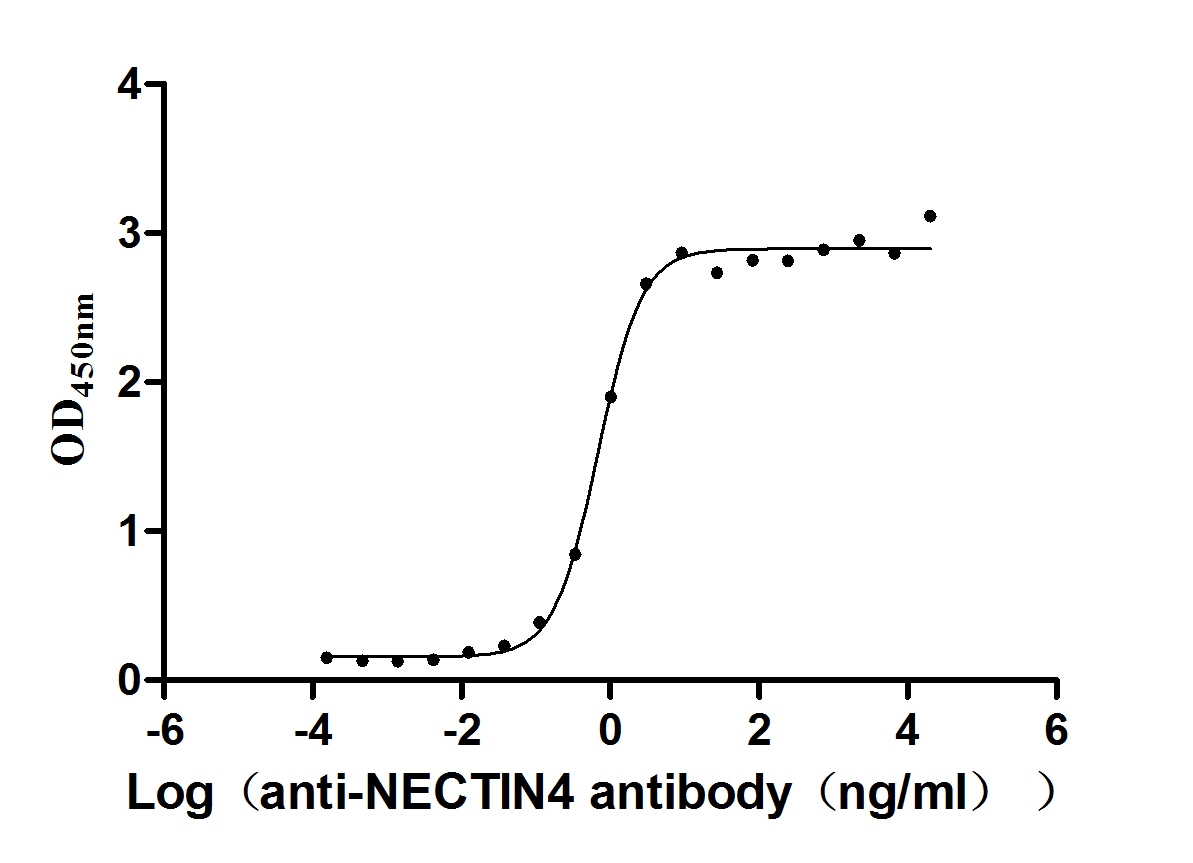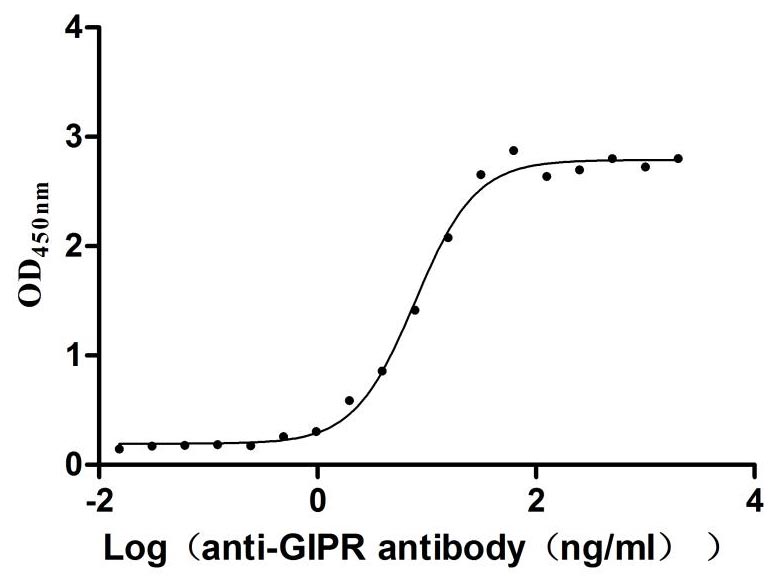Recombinant Mouse POU domain, class 3, transcription factor 2 (Pou3f2)
-
中文名稱(chēng):小鼠Pou3f2重組蛋白
-
貨號(hào):CSB-YP018397MO
-
規(guī)格:
-
來(lái)源:Yeast
-
其他:
-
中文名稱(chēng):小鼠Pou3f2重組蛋白
-
貨號(hào):CSB-EP018397MO
-
規(guī)格:
-
來(lái)源:E.coli
-
其他:
-
中文名稱(chēng):小鼠Pou3f2重組蛋白
-
貨號(hào):CSB-EP018397MO-B
-
規(guī)格:
-
來(lái)源:E.coli
-
共軛:Avi-tag Biotinylated
E. coli biotin ligase (BirA) is highly specific in covalently attaching biotin to the 15 amino acid AviTag peptide. This recombinant protein was biotinylated in vivo by AviTag-BirA technology, which method is BriA catalyzes amide linkage between the biotin and the specific lysine of the AviTag.
-
其他:
-
中文名稱(chēng):小鼠Pou3f2重組蛋白
-
貨號(hào):CSB-BP018397MO
-
規(guī)格:
-
來(lái)源:Baculovirus
-
其他:
-
中文名稱(chēng):小鼠Pou3f2重組蛋白
-
貨號(hào):CSB-MP018397MO
-
規(guī)格:
-
來(lái)源:Mammalian cell
-
其他:
產(chǎn)品詳情
-
純度:>85% (SDS-PAGE)
-
基因名:Pou3f2
-
Uniprot No.:
-
別名:Pou3f2; Brn-2; Brn2; Otf7; POU domain; class 3; transcription factor 2; Brain-specific homeobox/POU domain protein 2; Brain-2; Brn-2; Nervous system-specific octamer-binding transcription factor N-Oct-3; Octamer-binding protein 7; Oct-7; Octamer-binding transcription factor 7; OTF-7
-
種屬:Mus musculus (Mouse)
-
蛋白長(zhǎng)度:Full length protein
-
表達(dá)區(qū)域:1-445
-
氨基酸序列MATAASNHYS LLTSSASIVH AEPPGGMQQG AGGYREAQSL VQGDYGALQS NGHPLSHAHQ WITALSHGGG GGGGGGGGGG GGGGGGGGDG SPWSTSPLGQ PDIKPSVVVQ QGGRGDELHG PGALQQQHQQ QQQQQQQQQQ QQQQQQQQQQ QRPPHLVHHA ANHHPGPGAW RSAAAAAHLP PSMGASNGGL LYSQPSFTVN GMLGAGGQPA GLHHHGLRDA HDEPHHADHH PHPHSHPHQQ PPPPPPPQGP PGHPGAHHDP HSDEDTPTSD DLEQFAKQFK QRRIKLGFTQ ADVGLALGTL YGNVFSQTTI CRFEALQLSF KNMCKLKPLL NKWLEEADSS SGSPTSIDKI AAQGRKRKKR TSIEVSVKGA LESHFLKCPK PSAQEITSLA DSLQLEKEVV RVWFCNRRQK EKRMTPPGGT LPGAEDVYGG SRDTPPHHGV QTPVQ
-
蛋白標(biāo)簽:Tag?type?will?be?determined?during?the?manufacturing?process.
The tag type will be determined during production process. If you have specified tag type, please tell us and we will develop the specified tag preferentially. -
產(chǎn)品提供形式:Lyophilized powder
Note: We will preferentially ship the format that we have in stock, however, if you have any special requirement for the format, please remark your requirement when placing the order, we will prepare according to your demand. -
復(fù)溶:We recommend that this vial be briefly centrifuged prior to opening to bring the contents to the bottom. Please reconstitute protein in deionized sterile water to a concentration of 0.1-1.0 mg/mL.We recommend to add 5-50% of glycerol (final concentration) and aliquot for long-term storage at -20℃/-80℃. Our default final concentration of glycerol is 50%. Customers could use it as reference.
-
儲(chǔ)存條件:Store at -20°C/-80°C upon receipt, aliquoting is necessary for mutiple use. Avoid repeated freeze-thaw cycles.
-
保質(zhì)期:The shelf life is related to many factors, storage state, buffer ingredients, storage temperature and the stability of the protein itself.
Generally, the shelf life of liquid form is 6 months at -20°C/-80°C. The shelf life of lyophilized form is 12 months at -20°C/-80°C. -
貨期:Delivery time may differ from different purchasing way or location, please kindly consult your local distributors for specific delivery time.Note: All of our proteins are default shipped with normal blue ice packs, if you request to ship with dry ice, please communicate with us in advance and extra fees will be charged.
-
注意事項(xiàng):Repeated freezing and thawing is not recommended. Store working aliquots at 4°C for up to one week.
-
Datasheet :Please contact us to get it.
靶點(diǎn)詳情
-
功能:Transcription factor that plays a key role in neuronal differentiation. Binds preferentially to the recognition sequence which consists of two distinct half-sites, ('GCAT') and ('TAAT'), separated by a non-conserved spacer region of 0, 2, or 3 nucleotides. Acts as a transcriptional activator when binding cooperatively with SOX4, SOX11, or SOX12 to gene promoters. The combination of three transcription factors, ASCL1, POU3F2/BRN2 and MYT1L, is sufficient to reprogram fibroblasts and other somatic cells into induced neuronal (iN) cells in vitro. Acts downstream of ASCL1, accessing chromatin that has been opened by ASCL1, and promotes transcription of neuronal genes.
-
基因功能參考文獻(xiàn):
- that POU3F2 is involved in cognitive function as well as adult hippocampal neurogenesis PMID: 28782255
- This study investigated changes in the skin in the K5-Brn2 transgenic mouse, which overexpresses Brn2 and contains the keratin 5 promotor. The volume of the eccrine glands was reduced in the K5-Brn2 transgenic mouse. PMID: 28648603
- results suggest that a mutually repressive mechanism exists between Brn1/2 and Rorb expression and that the established expression of Brn1/2 and Rorb further specifies those neurons into L2/3 and L4, respectively, during UCP maturation PMID: 26951672
- Mammalian-specific sequences in pou3f2 contribute to maternal behavior. PMID: 24709564
- Brn2-Zic1 axis is essential to specify neural fate in retinoic-acid-treated embryonic stem cells. PMID: 25991548
- Brn2 predominantly forms homodimers on MORE cis elements in NS5 mouse neural stem cells PMID: 26265007
- This study showed that Sox/Pou cis-regulatory logics and heterogeneity of cortical progenitors in the the mouse embryonic cerebral cortex. PMID: 23720416
- Onset of Pou3f2 expression occurs in ventricular zone progenitors, and that Pou3f2 subsequently label neural progeny switching from deep-layer Ctip2+ identity to Satb2+ upper-layer fate as they migrate to proper superficial positions. PMID: 22892427
- Our findings have important implications for understanding lineage specification and somatic cell reprogramming, where SOX2, OCT4, and BRN2 have been shown to be key factors PMID: 23437007
- In the brains of Huntington's disease model mice, Brn-2 loses its function through two pathways, its sequestration by mutant huntingtin and its reduced transcription, leading to reduced expression of hypothalamic neuropeptides. PMID: 20185558
- Brn-1 and Brn-2 appear to critically control the initiation of radial migration, redundantly regulating the cell-autonomous expression of the p35 and p39 regulatory subunits of Cdk5 in migrating cortical neurons PMID: 11859196
- Brn-1 and Brn-2 share crucial roles in the production and positioning of mouse neocrotical neurons PMID: 12130536
- Data show that Brn-2 is expressed in melanocytes but not in embryonic melanoblasts and that its expression is directly controlled by the Wnt/beta-catenin signaling pathway in melanoma cell lines and in transgenic mice. PMID: 15024079
- The results suggest that the high levels of Brn-2 expression observed in melanomas link BRAF signaling to increased proliferation. PMID: 15024080
- the interaction between Brn-2 and Jab1 may provide some insights into the understanding of neuronal development and neurodegenerative diseases PMID: 15911144
- High Brn2 is associated with metastatic melanoma. PMID: 19826052
顯示更多
收起更多
-
亞細(xì)胞定位:Nucleus.
-
蛋白家族:POU transcription factor family, Class-3 subfamily
-
組織特異性:Expressed specifically in the neuroectodermal cell lineage.
-
數(shù)據(jù)庫(kù)鏈接:
Most popular with customers
-
Recombinant Human T-cell immunoreceptor with Ig and ITIM domains (TIGIT), partial (Active)
Express system: Mammalian cell
Species: Homo sapiens (Human)
-
Recombinant Human Receptor tyrosine-protein kinase erbB-3 (ERBB3), partial (Active)
Express system: Mammalian cell
Species: Homo sapiens (Human)
-
Recombinant Mouse GDNF family receptor alpha-like (Gfral), partial (Active)
Express system: Mammalian cell
Species: Mus musculus (Mouse)
-
Recombinant Human Nectin-4 (NECTIN4), partial (Active)
Express system: Mammalian cell
Species: Homo sapiens (Human)
-
Recombinant Human Intestinal-type alkaline phosphatase (ALPI) (Active)
Express system: Mammalian cell
Species: Homo sapiens (Human)
-
Recombinant Rat Gastric inhibitory polypeptide receptor (Gipr), partial (Active)
Express system: Mammalian cell
Species: Rattus norvegicus (Rat)
-
Recombinant Human Killer cell immunoglobulin-like receptor 3DL2 (KIR3DL2), partial (Active)
Express system: Mammalian cell
Species: Homo sapiens (Human)
-
Recombinant Human C-C chemokine receptor type 6(CCR6)-VLPs (Active)
Express system: Mammalian cell
Species: Homo sapiens (Human)


